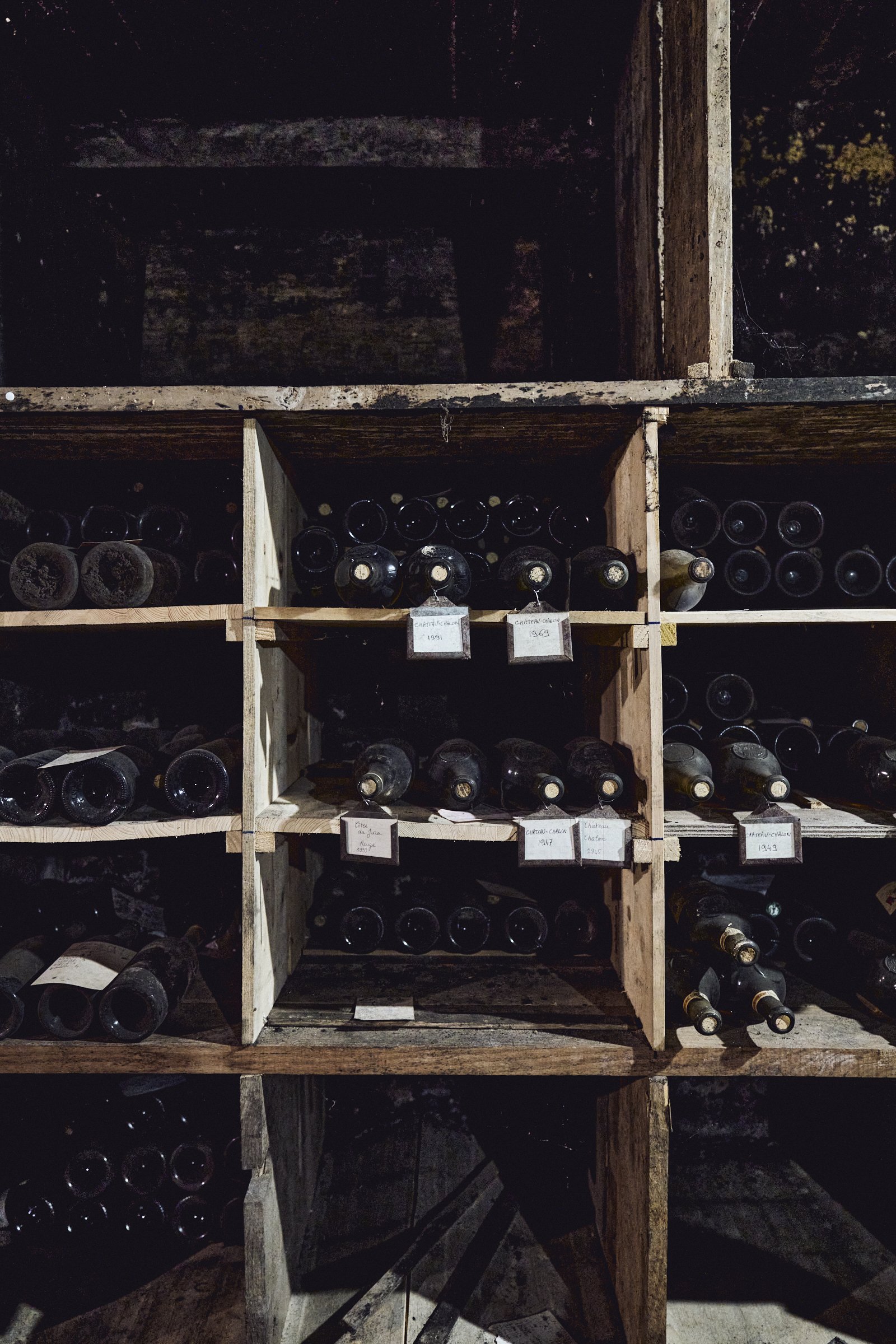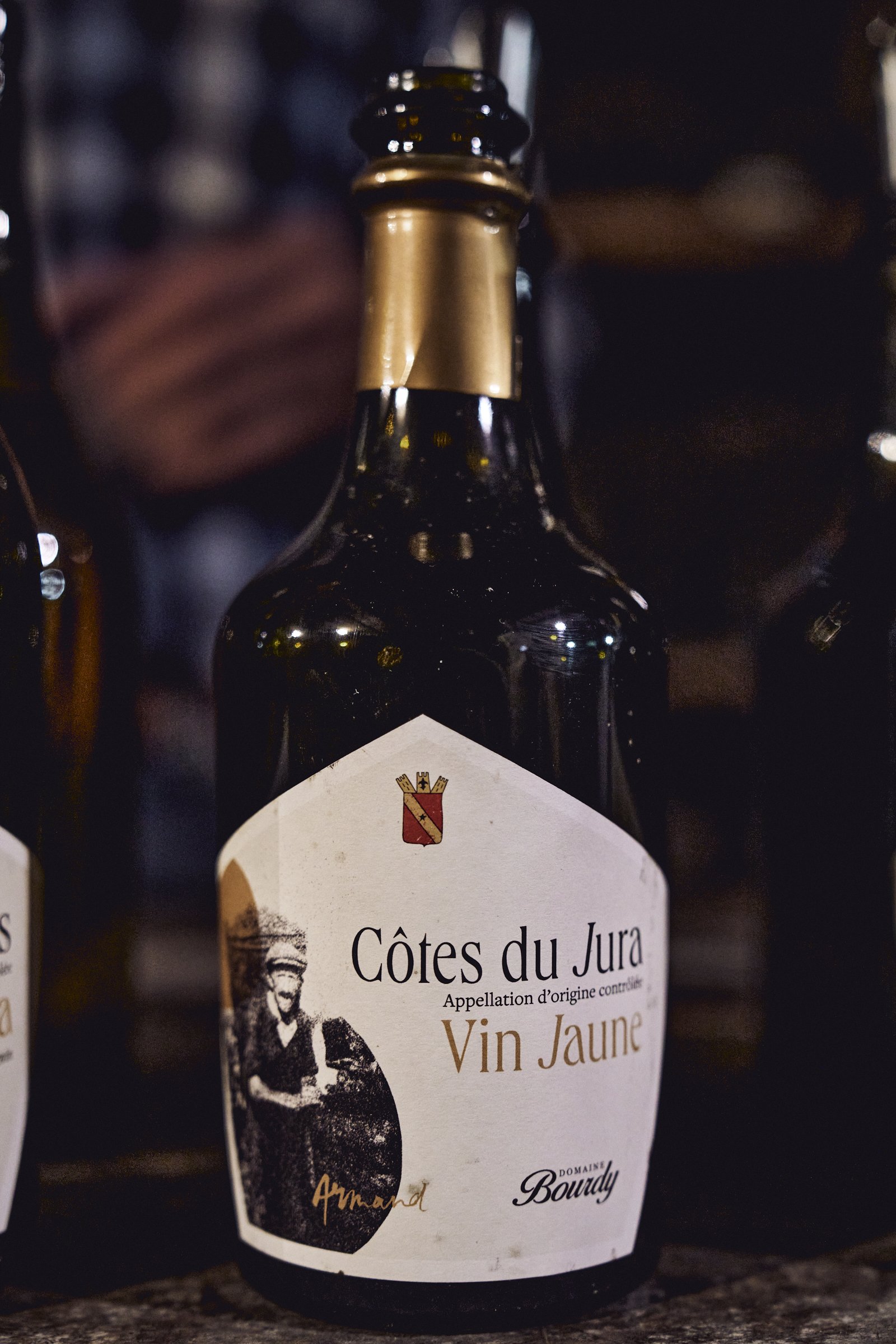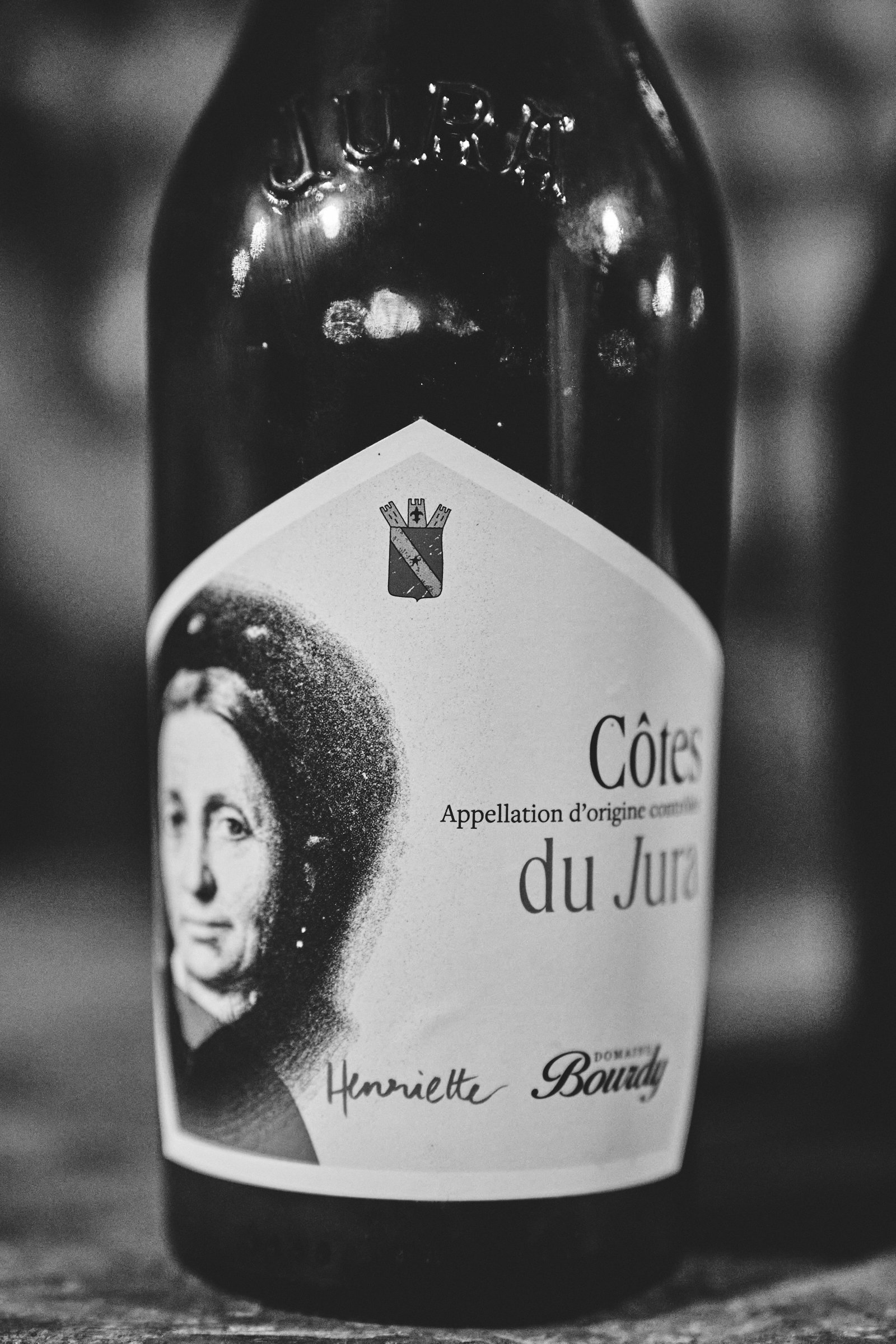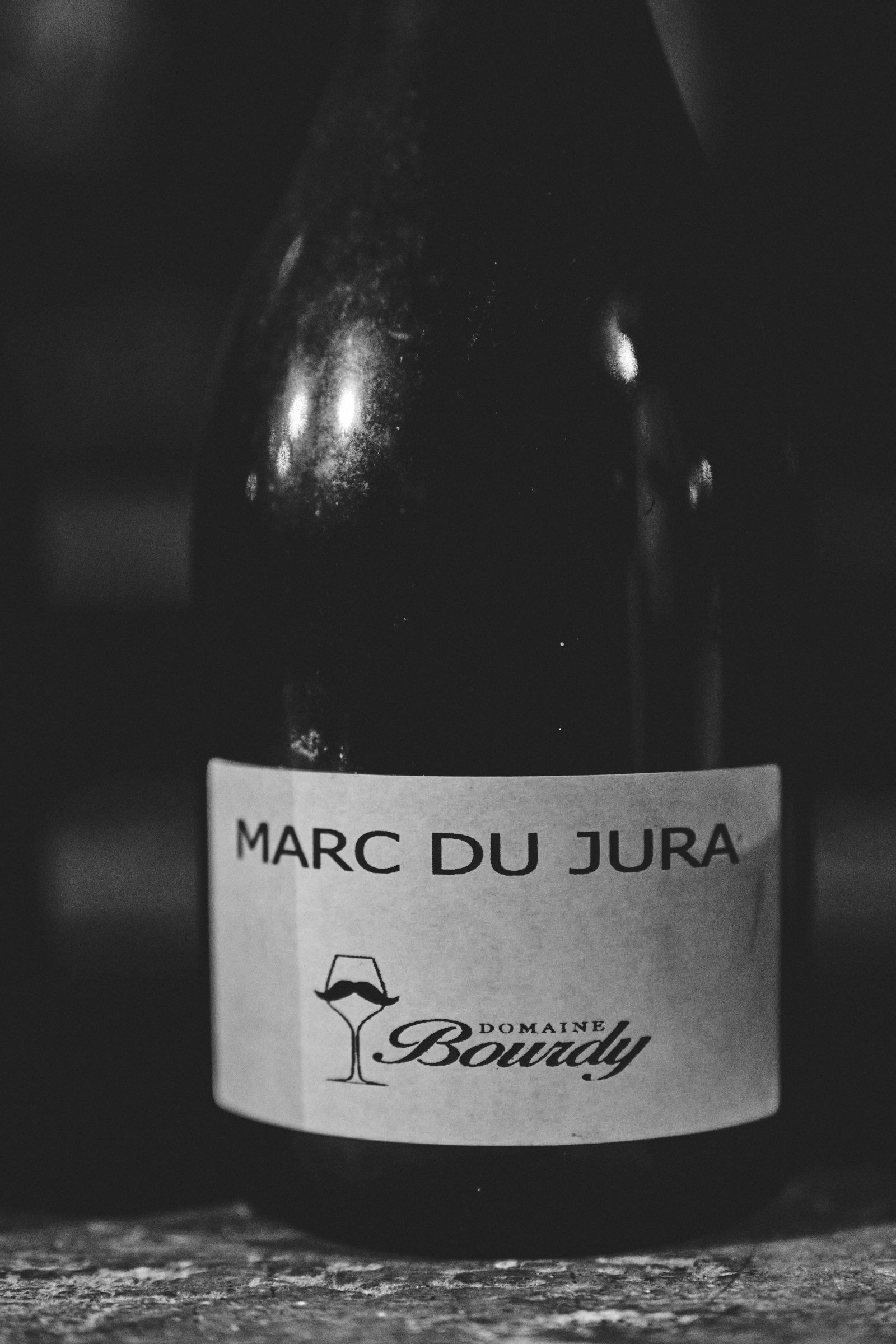Biodynamic tradition (and no, it is not the same as a natural wine)
I remember the day I bought my first Domain Jean Bourdy wine, having no idea what that was. The name on the bottle stated - Jura and Savagnin. That’s it. The wine shop seller said I would love it, so I hoped I would. It was a few days later when we opened it, sitting on a terrace with friends sharing food, when I fell in love with this wine. It was love at first sight and still is as strong as the first day we met.
We arrived, stopping the car in the courtyard of what seemed to be Domain Jean Bourdy. A man was sitting there, smoking his cigarette, and thinking about something. Maybe us, maybe life, perhaps wine, or the recent harvest. He almost did not see us, that’s how deep he was in his thoughts, making us wonder if we were in the right place. But, yes, we were more than right. We entered the "lobby" if I might call it that, but it was not one. It was a place that tens of years ago used to be a kitchen and is now a shop area. Monsieur Jean-François Bourdy started to talk and did so for almost two hours, making us appreciate that he was the one receiving us that day as the knowledge, the passion, and the stories he shared were much more than we expected. Well, except for the wines because the list of wines we tasted was something we did not expect at all.
Domain Jean Bourdy was one of the first to start making wine in the region with the approval of 500-year-old documents, which let them know the precise history of the family, harvests, climate, accountancy, and all sorts of details. In addition, the predecessors reserved bottles of every vintage since the mid-18th century. And not just a few bottles, but tens and hundreds every year, letting them explore the wine life cycle over the century. And they still do that today.
One of the biggest wine caches in the world with more than 30 000 old vintage bottles from 1781 to today. And yes, most of them are drinkable as only the good quality bottles are kept here. They take care of corks when necessary. They take care of bottles if necessary, all in order to preserve that heritage – that is their job and a bonus is to send many of those exceptional bottles around the world almost every week.
With only ten hectares of grapes, they have a very unique profile in the region. A very different one from many other wine growers in the region: they have never ever adapted to any new trends and continue producing wines as they have done for hundreds of years. No fashion in this house, as they love wine and tradition and keeping it alive. And since all of their wines are sold out, it shows that they are going the right way, and the disease of not having wine is hard to handle but, as Monsieru Bourdy says, it is a good disease to have.
And no, 500 years ago, they did not have 10 ha. Until 1895, when phylloxera arrived and destroyed most of the vineyards, all was good. They had a tiny plot, as did everyone else. Only the wealthy could afford something bigger. Then, for ten years, there was nothing. Silence in the vineyards. At the beginning of the 20th century, those who had between 1-3 ha were considered a big house, and Bourdy was one of them. Now they have ten hectares, which is not small and not big, but time-consuming because continuing the biodynamic techniques they started in 2006 takes a lot of effort. Doing biodynamics at the deep level they do means a lot of time, and laughter. He says that they work 13 months, trying to explain that he is not complaining but letting us understand that although it seems easy, it's not. Yet, the results are so excellent, so they continue.
With the same vinification as others, yet biodynamic in the vineyards, these wines are building a beautiful background that shows what has always been very important to the family - to have strong wines in a natural way (not natural wine, but the method), praising the rich soils and nature all around. That is what makes this wine quality better and better each year as even the changing climate difficulties are not in the way. When asked which year was the best and which was not, he explains that there's no discussion about that as all the years are beautiful, just the quantity (not quality) varies losing from 20 to even 50% of the harvest.
On our way to the tasting room, we enter the cellar that has been there forever, next to the previously mentioned kitchen and under the only upstairs bedroom they had when the house was built. It is tiny. Even unlivable, yet in those days, 500 years ago, that was a lot, as the oldest ancestor was rich.
The large old wood barrels in which the wine ages (never young barrels) greet us. Here, they use only those as they genuinely hate the oaky taste that smaller barrels give. Also, they never use new barrels, only 10-12 years old, with no tannins and only natural flavors, making the wine not only characteristic but elegant at the same time. This is one of the reasons Domaine Jean Bourdy wines can age all this time as it has a long cycle in barrels before bottling. And only when needed do they bottle the wine, leaving the rest in the barrels. Why? Simply tradition and excellent taste.
We finally arrive in the tasting room and in the middle of old vintage bottles, he opens wine after wine. From sparkling to reds, from lightest whites to Vin Jaune. From Marc de Vin to their unique fortified wine (pure gold).
New labels in front of us that I had not seen before have the faces of people, and while silently wondering who they are, he pours cremant and tells us that these are his ancestors. Sipping sparkling wine, which he describes as crispy and tasteful, he talks and talks but in a way that you could listen to all day. One after the other, we taste wines that are unique and perfect in every single way. Two hours later (and 30 minutes late on our schedule), we leave Domain Bourdy with boxes and boxes of wine and a recipe of traditional vin jaune chicken that everyone should try (he says). Arriving home, we promise ourselves to drink those wines slowly. Yet, as I write this article just a few weeks later, I must admit we haven't kept that promise. A good part of those bottles is gone. And thank God for that because to enjoy wine like that is something worth living for and a reason to go back.
Do give them a call and visit, if possible:
41 Rue Saint-Vincent, 39140 Arlay
www.cavesjeanbourdy.com
If there’s no chance to visit them, then do grab a bottle of their wine when you see one, as they are hard to find.









